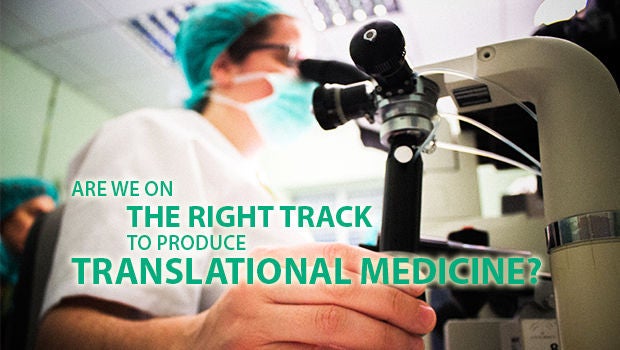
Photo : Freepik
Each year, the Nature SciCafe Asia, organised by the Eureka Institute for Translational Research, gathers scientists, industry players and investors in the same hall. It connects these key players in biomedical research to establish commercialisation partnerships and facilitate investments that will bring the scientists’ discoveries to market.
Since 2015, three rounds of Nature SciCafe Asia have come and gone by, but only 6 out of 24 projects showcased at the event were from Singapore. SingHealth has also yet to feature any projects at this platform.

However, Professor Salvatore Albani, Director of SingHealth’s Translational Immunology and Inflammation Centre, and President of the Eureka Institute, is not unduly worried.
“The selection of projects to the Nature SciCafe is stringent and independent. As strong ecosystems that support biomedical research, Singapore and SingHealth can root for the initiatives without worrying about formal representation. Being able to embrace, guide, inspire and be inspired by other research projects is part of the process of doing successful biomedical research.”
4 components of an ecosystem for translational research
Dr Juan Carlos Lopez, a member of the Board of Directors of the Eureka Institute and founder of Haystack Science, a New York-based company that helps scientists commercialise their research, believes there are four essential components in a vibrant ecosystem to support translational research: governmental support, science capital, financial capital and human capital.
“In Singapore, government support is clearly established and the quality of science is high. But financial capital is challenging to come by, as not many venture capitalists are interested in early stage ventures coming out of universities, compared to later stage projects more ready for market,” he pointed out.

Dr Lopez is of the view that investors are more inclined to invest locally where it is easier for them to keep an eye on the companies. They also tend to invest in people they trust or have built up their credibility.
However, human capital is the hardest to come by. He explained, “Human capital does not just refer to the scientists, but also to the management team – people with the right experience and right track record, who can attract venture capital and develop the company. The only place we see a lot of these talent are in Boston and San Francisco.”
In Dr Lopez’s views, Boston and San Francisco are ‘role model’ cities with vibrant ecosystems to create biomedical companies. In these cities, ideas flourish into companies, many deals are closed, and companies often change hands and get sold to big pharmaceutical firms.
“The human capital aspect is often neglected. And it’s very difficult to attract them if they are already established in a certain place. Even New York City has problem attracting those from Boston. It is much more difficult to attract them all the way to Singapore,” he said.
What is success for Singapore in translational research?
Dr Lopez pointed out that Singapore needs to define its goals and success clearly.
“What does Singapore want to achieve through the biomedical industry? Is it economic goals of company and job creation, prestige and international recognition as a player in biomedical research, or drug creation to benefit more patients? Different goals warrant different strategies.”
As a small country, Singapore needs to find its unique selling point to attract top talent and investors. One way is to focus on one or two niche areas, such as ophthalmology, or consider exporting intellectual property if there aren’t sufficient financial or human capital here.
Let scientists be scientists
On how scientists can be better supported to pursue translational research, Dr Lopez offered a different perspective.
“Scientists are interested in science because of basic curiosity and interest in the subject. Why are we asking scientists to become entrepreneurs and give them the burden of having to think of the commercial interests?
The people who are more inclined to think of how research will benefit patients are physician (clinician) scientists who think of diseases from a science point of view. If scientists have no inclination to find cures, let the entrepreneurs be the ones to take the science to the market.”
What’s needed in SingHealth
How then, can SingHealth produce more and better translational research? Professor Albani shared his views.
“Joining SingHealth and Duke-NUS Medical School into a single academic medical centre more than a decade ago was the right strategy to create a critical mass for translational research. But the process of integrating academia and healthcare is a continuous one, and there are cultural differences between an enterprise geared towards serving patients and one that evolves medicine as a subject of study.”
For SingHealth to become more supportive of translational research, Prof Albani hopes to see better interfaces between science and business, greater awareness on translational medicine and better plugin to the global network.
“We need clinician scientists who can evolve their ideas into solutions that serve medical needs. We have many opportunities in areas such as in immunotherapy for cancer, autoimmune diseases and precision medical tools, and need people who can fill the big gap between medical needs and available technology.”













 Get it on Google Play
Get it on Google Play